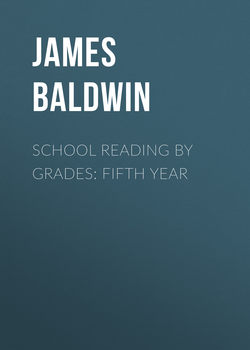Читать книгу School Reading By Grades: Fifth Year - Baldwin James - Страница 11
BETSEY HULL’S WEDDING
ОглавлениеIn the early days of New England all the money that was used was brought from Europe. Coins of gold and silver from England were the most plentiful; but now and then one might see a doubloon, or some piece of smaller value, that had been made in Spain or Portugal. As for paper money, or bank bills, nobody had ever heard of them.
Money was so scarce that people were often obliged to barter instead of buying and selling. That is, if a lady wanted a yard of dress goods, she would perhaps exchange a basket of fruit or some vegetables for it; if a farmer wanted a pair of shoes, he might give the skin of an ox for it; if he needed nails, he might buy them with potatoes. In many places there was not money enough of any kind to pay the salaries of the ministers; and so, instead of gold or silver, they were obliged to take fish and corn and wood and anything else that the people could spare.
As the people became more numerous, and there was more trade among them, the want of money caused much inconvenience. At last, the General Court of the colony passed a law providing for the coinage of small pieces of silver – shillings, sixpences, and threepences. They also appointed Captain John Hull to be mint-master for the colony, and gave him the exclusive right to make this money. It was agreed that for every twenty shillings coined by him, he was to keep one shilling to pay him for his work.
And now, all the old silver in the colony was hunted up and carried to Captain Hull’s mint. Battered silver cans and tankards, silver buckles, broken spoons, old sword hilts, and many other such curious old articles were doubtless thrown into the melting pot together. But by far the greater part of the silver consisted of bullion from the mines of South America, which the English buccaneers had taken from the Spaniards and brought to Massachusetts. All this old and new silver was melted down and coined; and the result was an immense amount of bright shillings, sixpences, and threepences. Each had the date, 1652, on one side, and the figure of a pine tree on the other; hence, the shillings were called pine-tree shillings.
When the members of the General Court saw what an immense number of coins had been made, and remembered that one shilling in every twenty was to go into the pockets of Captain John Hull, they began to think that the mint-master was having the best of the bargain. They offered him a large amount, if he would but give up his claim to that twentieth shilling. But the Captain declared that he was well satisfied to let things stand as they were. And so he might be, for in a few years his money bags and his strong box were all overflowing with pine-tree shillings.
